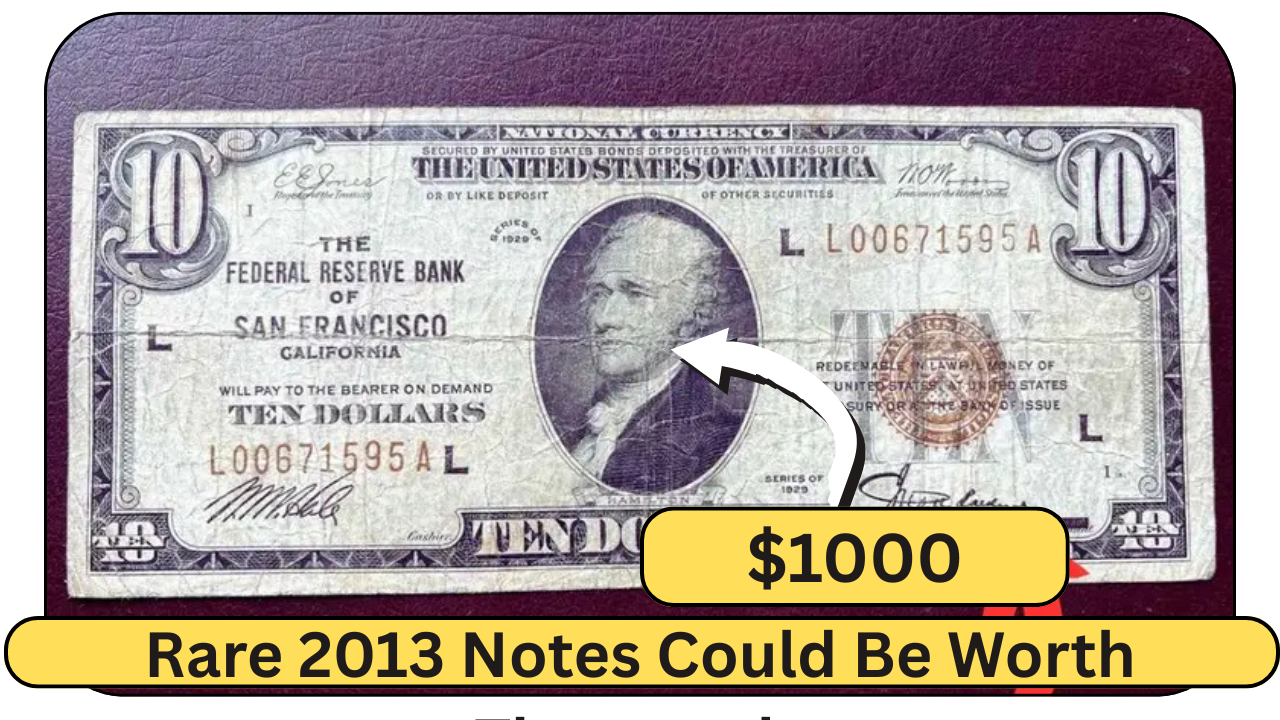That $100 bill in your wallet might be worth way more than you think! In 2025, certain 2013 $100 bills are grabbing attention for their rare features, with some selling for thousands at auctions. Thanks to printing errors, star notes, or unique serial numbers, these bills are collector gold. X posts are buzzing, with one user sharing, “Found a 2013 star note in my cash—sold it for $2,000!” While a $500,000 claim for a 2013 bill seems hyped, verified sales show $2,000–$15,000 for top finds. Here’s how to check your wallet for a valuable 2013 $100 bill and join the treasure hunt.
A Bill with a Cool Backstory
The 2013 $100 bill, featuring Benjamin Franklin on the front and Independence Hall on the back, got a big redesign with new security features like a blue 3D ribbon and color-shifting ink to stop counterfeiters. But mistakes happened during printing, making some bills extra special. A famous error involved duplicate serial numbers, where two bills got the same number—a rareitudini
System: rare mistake that makes them super valuable. X users call it “a collector’s dream hidden in plain sight.” Let’s dive into why these bills are so sought-after and how to spot a rare one.
What Makes These Bills So Valuable?
Most 2013 $100 bills are worth $100, but rare ones with errors or special serial numbers can fetch hundreds or thousands. The big prize is the “duplicate serial number” error, where bills from different printing facilities (Fort Worth and Washington, D.C.) share the same number. These can sell for $2,000–$15,000, and a matching pair could hit $20,000–$100,000. Star notes, marked with a star () at the end of the serial number, replace faulty bills and are rare, especially with low serial numbers like L00000001. Fancy serial numbers, like ladders (12345678) or palindromes (12344321), also boost value. X posts report a 2013 star note selling for $12,000 in 2024.
How to Spot a Rare $100 Bill
Here’s what to look for in your 2013 $100 bills:
- Series Year: Check for “Series 2013” below Franklin’s portrait.
- Star Note: Look for a star (*) at the end of the serial number.
- Serial Number: Check for patterns like 12345678, 00000001, or palindromes like 12344321.
- Errors: Look for ink smears, misaligned security ribbons, or off-center printing.
- Condition: Crisp, uncirculated bills are worth more.
Use a magnifying glass to spot errors or microtext like “USA 100” on the security ribbon. Don’t fold or damage the bill—store it in a protective sleeve and get it graded by PCGS or PMG.
| Feature | Regular 2013 $100 Bill | Rare 2013 $100 Bill |
|---|---|---|
| Serial Number | Random | Star (*), ladder, palindrome |
| Errors | None | Ink smears, misalignment |
| Printing Location | Fort Worth or D.C. | Duplicate serial numbers |
| Value | $100 | $500–$15,000+ |
Where to Find These Hidden Gems
Rare 2013 $100 bills are still in circulation, hiding in wallets, ATMs, or cash registers. Check change from stores, tips, or old envelopes—anywhere cash changes hands. X users share stories, like one finding a star note in a birthday card that sold for $8,000. Bank rolls or family stashes are great spots, as some collectors find error bills in uncirculated stacks. To sell, try reputable auction houses like Heritage Auctions, eBay, or currency dealers. Grading can boost value, with top bills fetching $2,000–$15,000. Always verify authenticity to avoid fakes.
The Big 2013 Printing Error
The most famous 2013 $100 bill error is the duplicate serial number mistake, where Fort Worth and D.C. facilities printed bills with identical numbers, like L00012345*. Only a small number exist, and collectors pay big for matching pairs. A single error bill can sell for $2,000–$4,500, while pairs could reach $100,000 in pristine condition. Star notes from limited runs, especially with low numbers, are also hot. X posts note over 1,200 error bills found, so keep looking! Check the Federal Reserve seal for a “B” (New York) and “FW” for Fort Worth prints.
Why 2025 Is the Time to Check
With America’s 250th anniversary nearing in 2026, collectors are snapping up modern rarities like the 2013 $100 bill for their unique errors and history. Most are worth face value, but a star note, ladder serial, or duplicate error could bring hundreds or thousands. The $500,000 claim is likely exaggerated, but a 2013 bill with a binary radar serial (like 10101010) sold for $4,320 at Heritage Auctions. Grab a magnifying glass, check your $100 bills for stars or patterns, and visit a currency dealer. As one X user said, “Checked my wallet—found a star note worth $500!” Your next bill could be a collector’s treasure

